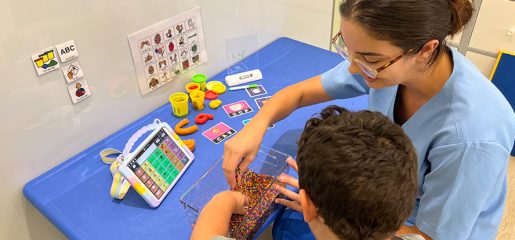Articulation disorders, characterized by difficulties in pronouncing specific sounds correctly, can significantly impact speech intelligibility. Speech therapists at a the speech clinic Dubai employ various techniques to address these issues, helping individuals achieve clearer and more effective communication.
Phonetic placement therapy:
Phonetic placement therapy involves teaching the correct placement and movement of the articulators—tongue, lips, and jaws—to produce specific sounds. Therapists provide detailed instructions and use tools like mirrors or diagrams to show where and how sounds are produced. For example, a therapist might guide a child to place their tongue behind the upper teeth to produce the “t” sound. This method is particularly effective for children who struggle with producing specific sounds due to improper articulator placement.
Auditory discrimination training:
Auditory discrimination training helps individuals differentiate between similar a sound, which is vital for correct sound production. This technique involves listening exercises where the individual identifies and distinguishes between pairs of sounds. For instance, a therapist may present the sounds “b” and “p” and ask the child to recognize which sound they hear. Improving auditory discrimination skills aids in self-monitoring and correcting speech errors independently.
Visual and tactile cues:
Visual and tactile cues provide additional sensory input to aid in correct sound production. Visual cues might include hand signals or mouth models that show the proper articulatory positions. Tactile cues involve physical prompts, such as touching the child’s throat to indicate the need for a voiced sound or using a finger to guide tongue placement. These cues help reinforce the correct movements and positions needed for accurate articulation.
Repetitive practice and drill exercises:
Repetitive practice is essential in mastering articulation skills. Therapists use drill exercises where individuals repeatedly practice target sounds in isolation, syllables, words, and eventually sentences. This method, known as the “hierarchical approach,” ensures that sounds are mastered in increasingly complex linguistic contexts. Consistent and structured practice helps solidify correct articulation patterns.
Minimal pair therapy:
Minimal pair therapy uses pairs of words that differ by only one sound, helping individuals to recognize and produce the target sounds accurately. For example, using pairs like “bat” and “pat” can help a child distinguish between the “b” and “p” sounds. This technique is effective in highlighting the importance of specific sounds in changing word meanings and improving overall speech clarity.


